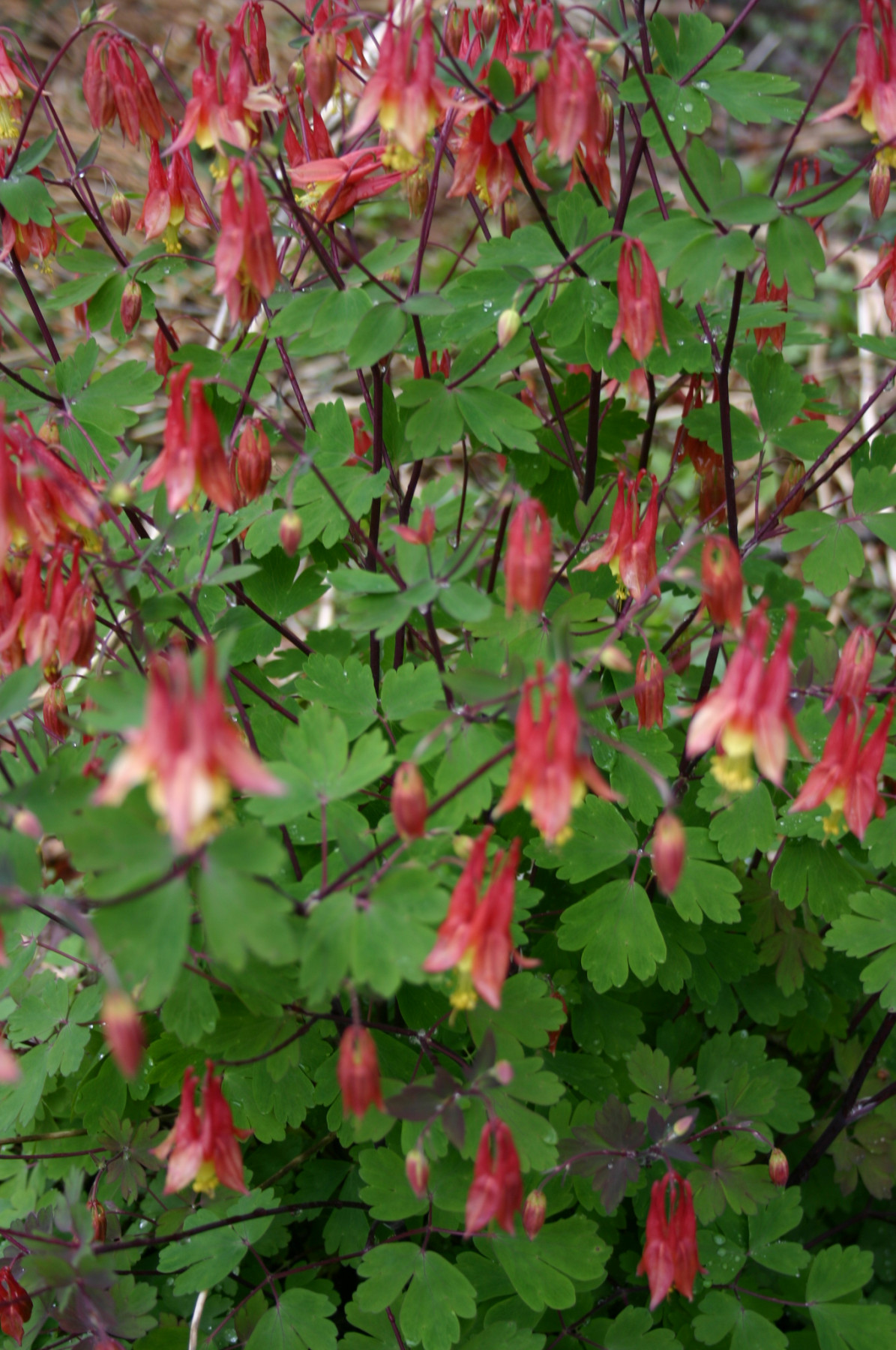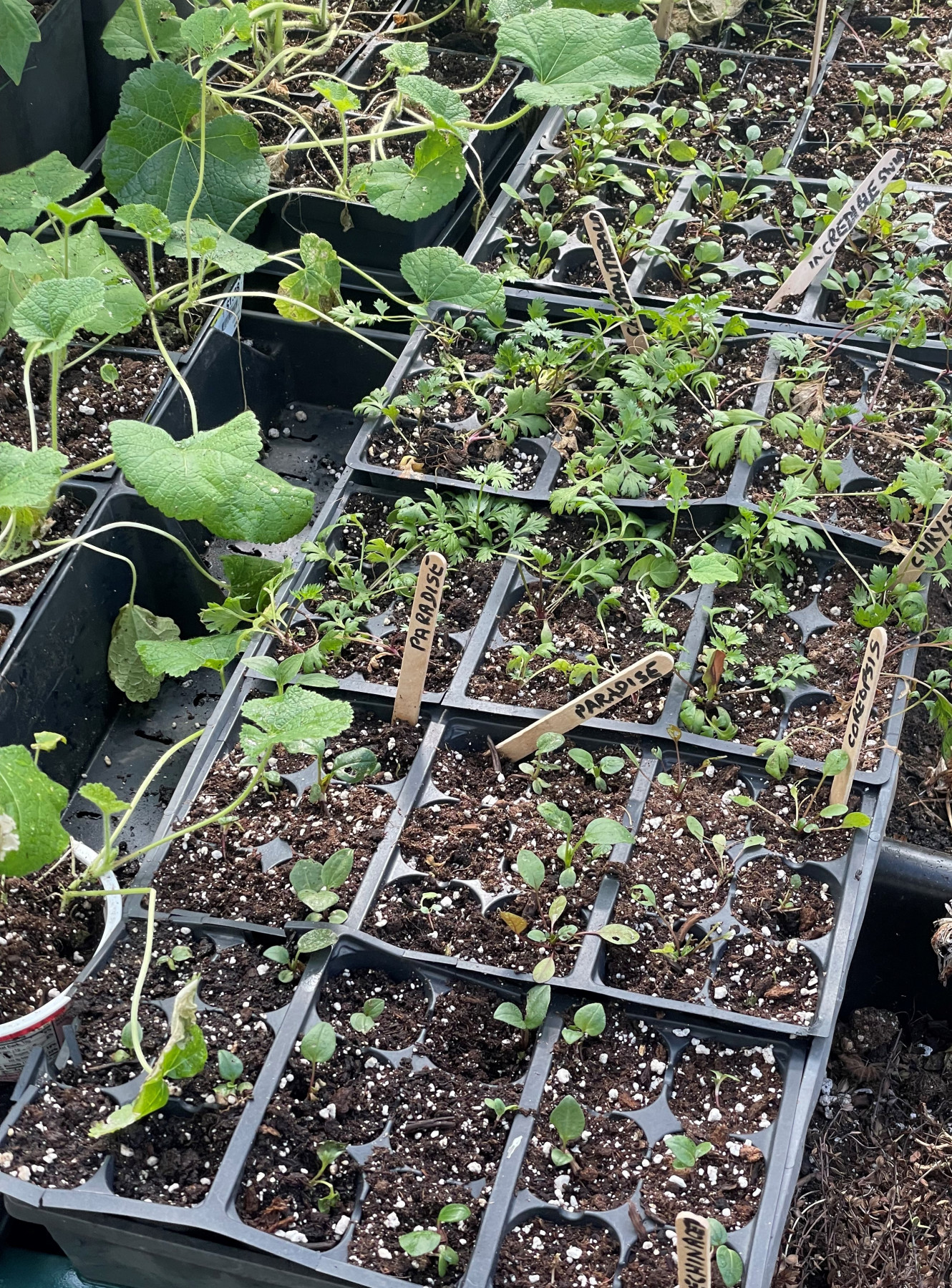
A month or two ago, I was watching an English whodunnit and was impressed by the country gardens where the story took place, so I decided that this year I would expand my English country-style flower garden. I purchased seeds for hollyhocks, cleome, rudbeckia, coreopsis, primrose, and columbine and planted them in my basement germination chamber. The hollyhocks and cleome would go in the back of the border to flower alongside the lupines (if they haven’t been eaten by rabbits)! Rudbeckia, columbine and coreopsis would be middle of the border, while the primula would be at the front.
The seeds germinated quickly and profusely under the chamber lights. The only ones requiring any special attention were the primrose seeds, which are surface sown and germinate best in constant light, a condition that was easily provided by leaving one light on 24/7. Soon I had an impressive number of flower seedlings, seemingly enough to start an entire country estate.

Then fate stepped in. While working in the yard, I tripped and landed on a knee, driving my femur upward and fracturing it. During my stay in the hospital, the plants, of course, continued to grow prodigiously. When I finally returned to them two weeks later, the hollyhocks were more than eight inches tall and were crowding out everything else. Repotting progressed slowly with the pain of my new artificial hip, but by mid-April, with a little assistance, all the plants had been moved from the germination chamber to the greenhouse. Fortunately, this potting-up and relocation process was done in plenty of time for planting out in mid-May. Because I could hobble around with a cane, I was able to keep everything well-watered with a hose.

However, this experience raises an important issue. If you’re ever laid up due to illness or accident, or if you’re simply away from home for any reason over a period of time, do you have someone to look after your plants? Several of my friends have volunteered to help in my greenhouse, but having never seen them in horticultural action, I don’t know how well they, or the plants, would fare. That’s why you might want to think about training a greenhouse helper before the need for one arises rather than having to issue instructions to a greenhouse novice by email or phone. All of us have our own approaches to tending the particular plants we grow. We know what works for us and what does not. So even a very well-intentioned helper, if not properly trained, could end up doing things in ways that inadvertently harm your sizable investment in greenhouse plants. Knowing this, I’m now thinking ahead to how my greenhouse could be managed should I ever suffer another blow to my body and self-esteem. You might consider doing the same.


